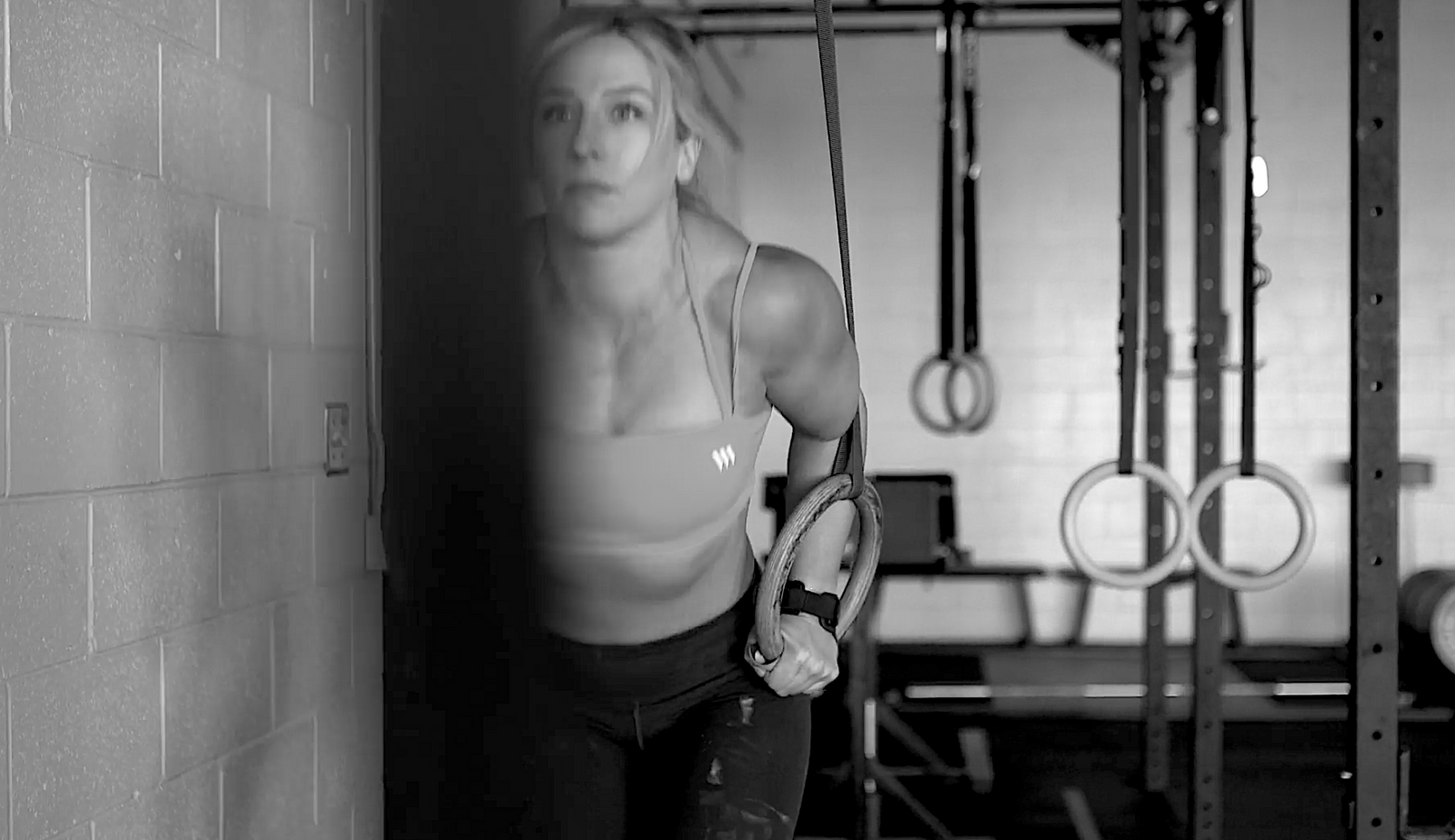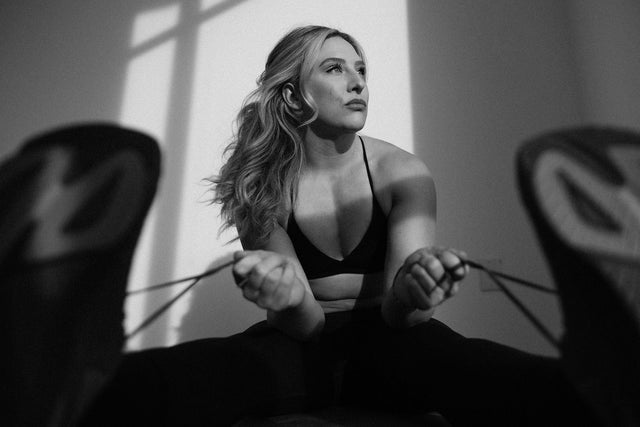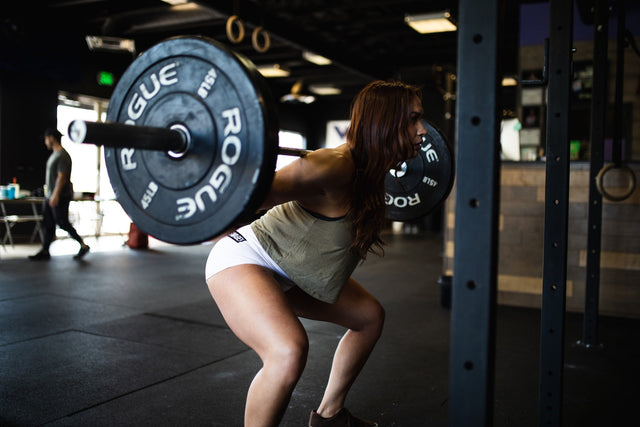Dips are one of the most effective upper body exercises for building serious strength and muscle — but not all dips are created equal. While they may look similar, chest dips and triceps dips have very different biomechanics, muscle activation patterns, and programming purposes. Whether your goal is a bigger chest, stronger triceps, or a well-balanced push day, understanding the distinction between these two dip variations is essential.
In this guide, we’ll break down the anatomy, form cues, benefits, and best programming strategies for chest dips vs. triceps dips — so you can train with intent and get better results in less time.
Chest Dips vs Triceps Dips: What’s the Difference?
At first glance, chest dips and triceps dips may look nearly identical — both involve dipping between parallel bars or on a dip station using bodyweight resistance. But the angle of your torso, the path of your arms, and your intentional focus change which muscles take the lead.
The main difference:
-
Chest Dips: Forward torso lean (~30–45°), wider elbow angle → emphasizes the pectorals
-
Triceps Dips: Upright torso, elbows tucked → emphasizes the triceps brachii
Both exercises target overlapping muscles to some extent, but proper form and intent will dictate which variation produces better results for your training goals.
Muscles Worked
Chest Dips
Chest dips place the greatest load on the pectoralis major, especially the lower sternal fibers — an area that can be difficult to target with traditional pressing movements.
Primary muscles engaged:
-
Pectoralis major (sternal and lower fibers)
-
Anterior deltoids
-
Triceps brachii
-
Serratus anterior (important for scapular control and stability)
Secondary engagement occurs in the core and forearms as you stabilize the movement.
Triceps Dips
Triceps dips shift the emphasis toward elbow extension, making them an excellent isolation tool for building bigger, stronger arms.
Primary muscles engaged:
-
Triceps brachii (long, lateral, and medial heads)
Secondary involvement:
-
Pectoralis major (upper clavicular fibers)
-
Anterior deltoids
-
Forearms and grip muscles
👉 To build stronger arms, pair your triceps dips with Tricep Cable Pushdowns — another key triceps isolation move.
Chest Dip Technique and Form Cues
To truly target your chest during dips, it’s all about controlling your torso angle and arm path. Small changes here make a big difference in muscle activation.
Follow these cues for proper chest dip form:
-
Start position: Grip parallel bars, arms fully extended, shoulders slightly depressed (down and back).
-
Lean forward: Tilt your torso forward ~30–45° to shift emphasis onto the chest. The more upright you remain, the more triceps will dominate.
-
Leg position: Bend knees slightly and allow feet to move behind your body to help maintain the forward lean.
-
Elbow path: Allow elbows to flare naturally ~45° out from your sides — avoid keeping them rigidly tucked.
-
Descent: Lower slowly, focusing on a deep stretch in the chest. Ideally lower until your upper arms are at or just below parallel to the floor — but stop if you feel shoulder discomfort.
-
Press up: Drive back to the top by contracting your chest, keeping the forward lean consistent through the movement.
👉 Chest dips are a powerful compound accessory to add on push day alongside moves like the Incline Dumbbell Chest Fly or barbell pressing work.
Common mistakes to avoid:
-
Staying too upright → turns it into a triceps dip.
-
Letting shoulders shrug up → increases injury risk.
-
Not using a full range of motion → limits chest activation.
Triceps Dip Technique and Form Cues
When your goal is triceps hypertrophy and strength, proper dip technique minimizes chest involvement and keeps tension on the triceps brachii through a full range of motion.
Here’s how to execute triceps dips correctly:
-
Start position: Grip parallel bars, arms fully extended, shoulders down and back.
-
Torso angle: Keep your torso as upright as possible — just a slight forward lean (~10–15°) is natural, but avoid turning this into a chest dip.
-
Leg position: Keep your feet beneath your body or slightly forward for balance and control.
-
Elbow path: Keep elbows tucked close to your sides throughout the movement — this maximizes triceps involvement and protects your shoulders.
-
Descent: Lower under control until your upper arms are at or just below parallel. Avoid excessive depth that can stress the shoulder joint.
-
Press up: Drive up by forcefully extending your elbows, keeping tension in your triceps at the top.
👉 For a complete arm training program, combine triceps dips with Tricep Cable Pushdowns to maximize hypertrophy across all three triceps heads.
Common mistakes to avoid:
-
Leaning too far forward → chest takes over.
-
Flaring elbows excessively → risk of shoulder strain.
-
Cutting the range of motion short → limits triceps activation.
Benefits of Each Dip Variation
Both chest dips and triceps dips offer unique advantages for building upper body strength and muscle. Here’s how each variation can strategically benefit your training.
Benefits of Chest Dips
-
Superior Lower Chest Development: Chest dips effectively target the sternal and lower fibers of the pectoralis major through a deep loaded stretch, which promotes greater hypertrophy in this region — an area that’s often under-stimulated by horizontal presses.
“The inclusion of movements that emphasize shoulder extension, such as dips, can promote hypertrophy of the lower pectoral fibers.”
— Schoenfeld, Strength and Conditioning Journal
-
Deep Stretch and Loaded Eccentric: The ability to achieve a greater range of motion and eccentric stretch during chest dips stimulates more mechanical tension — one of the primary drivers of muscle growth.
“Exercises that incorporate a full range of motion and deep muscle stretch elicit greater hypertrophy than partial range equivalents.”
— Maeo et al., Journal of Applied Physiology
-
Functional Compound Accessory: Chest dips improve shoulder stability, scapular control, and bodyweight strength — skills that transfer well to barbell and dumbbell pressing. They make an excellent pairing with exercises like the Incline Dumbbell Chest Fly to build a fuller, more balanced chest.
Benefits of Triceps Dips
-
Triceps Isolation Under Heavy Load: Triceps dips allow you to load the triceps brachii with significant resistance, especially once bodyweight dips are mastered and weighted progressions are added. This promotes strength and hypertrophy across all three triceps heads.
“Heavily loaded compound elbow extension exercises, such as dips, produce robust triceps hypertrophy and pressing strength gains.”
— Schoenfeld & Grgic, Strength and Conditioning Journal
-
Improved Lockout Strength: The triceps are the primary movers during the lockout phase of pressing movements. Strengthening them through dips enhances bench press and overhead press performance.
“Triceps strength is a key contributor to lockout ability in pressing tasks, with hypertrophy linked to improved high-intensity performance.”
— Suchomel et al., Sports Medicine
-
Arm Hypertrophy: Dips produce consistent tension across the entire range of elbow extension, making them highly effective for arm size and definition — ideal for pairing with isolation work like Tricep Cable Pushdowns.
When to Use Chest Dips vs Triceps Dips in Your Program
Both chest dips and triceps dips are highly effective, but your training goal and programming phase should dictate which variation you prioritize. Here’s how to decide:
Use Chest Dips When:
-
Your goal is pec hypertrophy and you want to emphasize chest development, particularly the lower and mid-sternal fibers.
-
You want to improve scapular stability and shoulder control through deeper ranges of horizontal pushing.
-
You’re programming a hypertrophy-focused push day and want to complement barbell and dumbbell work with a different loading profile.
-
You’re building a more functional compound push pattern (useful for athletes and bodyweight-focused training).
👉 Example pairing: Flat bench press → Incline Dumbbell Chest Fly → Chest dips finisher → Best Leg Day Exercises on alternate days for balanced physique work.
“Exercises promoting horizontal adduction and shoulder extension through deep ranges (such as chest dips) complement barbell presses and drive greater pectoralis major development.”
— Schoenfeld et al., European Journal of Sport Science
Use Triceps Dips When:
-
Your goal is triceps hypertrophy or increasing pressing lockout strength.
-
You want to improve arm size — pairing dips with isolation work like Tricep Cable Pushdowns for full triceps development.
-
You’re following a powerlifting or strength-based block and want to specifically address weak lockouts in bench press or overhead press.
-
You’re doing an arm day split and want a heavy compound for triceps to start the session.
“Triceps-focused compound movements such as parallel-bar dips under load are highly effective for improving elbow extension strength and arm hypertrophy.”
— Schoenfeld & Grgic, Strength and Conditioning Journal
In short:
| Goal | Primary Dip Variation |
|---|---|
| Chest growth and pec strength | Chest Dips |
| Arm size and triceps lockout power | Triceps Dips |
Programming Tips
Both chest dips and triceps dips can fit into a wide variety of training programs — from bodyweight progressions to advanced hypertrophy and strength cycles. The key is knowing how to adjust volume, load, and tempo based on your goal.
General Guidelines
| Goal | Sets/Reps | Rest |
|---|---|---|
| Strength | 4–6 sets of 4–6 reps (weighted) | 2–3 min |
| Hypertrophy | 3–5 sets of 8–12 reps | 60–90 sec |
| Endurance | 3–4 sets of 15–20+ reps (bodyweight) | 45–60 sec |
“Optimal hypertrophy training typically occurs with sets of 6–12 repetitions at moderate to high effort levels.”
— Schoenfeld et al., Sports Medicine
Progression Strategy
Chest Dips:
-
Beginner: Master full bodyweight range of motion for 3 sets of 10–12
-
Intermediate: Add tempo work (3-second eccentric, pause at bottom)
-
Advanced: Add weighted chest dips with a dip belt (start with 5–10% of bodyweight)
Triceps Dips:
-
Beginner: Start with bench dips if needed to build initial strength
-
Intermediate: Progress to bodyweight dips for sets of 8–12
-
Advanced: Add weighted triceps dips to develop lockout power and arm size — excellent for pairing with 10 Proven Strategies To Build Muscle Fast hypertrophy principles.
Where to Place Dips in Your Program
Chest Dips:
-
Early or mid-workout on push days or chest days, after primary compound pressing.
-
Use as a finisher for deep chest fatigue.
Triceps Dips:
-
Mid or late in arm day sessions, or after main compound presses in upper body strength workouts.
-
Excellent as a strength accessory for triceps lockout focus.
“Strategically placing dips in a hypertrophy program enhances muscular adaptations when combined with targeted isolation and compound movements.”
— Gentil et al., Strength and Conditioning Journal
Common Mistakes to Avoid
While dips are incredibly effective, poor technique can limit muscle recruitment and increase injury risk — especially at the shoulder joint. Here are the most common mistakes to watch for:
1. Not Controlling Depth
Going too deep — especially beyond individual shoulder mobility — can place excessive stress on the anterior shoulder capsule and rotator cuff.
“Excessive dip depth is associated with anterior shoulder strain and can lead to impingement or rotator cuff injury.”
— McMaster & Troup, British Journal of Sports Medicine
Fix: Lower only until your upper arms are at or just slightly below parallel. Prioritize a controlled stretch without joint strain.
👉 Learn more about safe shoulder mechanics in movements like the Reverse Dumbbell Fly to reinforce healthy shoulder function.
2. Flaring Elbows Excessively
Allowing elbows to flare too far outward can:
-
Reduce triceps engagement (in triceps dips)
-
Increase strain on shoulder joint
-
Disrupt scapular control
“Excessive elbow flare alters force vectors and increases anterior shoulder stress during parallel bar dips.”
— Andrews & Youdas, Journal of Orthopaedic & Sports Physical Therapy
Fix: For chest dips, allow a natural ~45° flare. For triceps dips, keep elbows tucked close to the torso.
3. Leaning Too Far or Too Little (Based on Goal)
Your torso angle determines which muscles dominate the movement:
-
Lean too far forward in triceps dips → chest takes over.
-
Stay too upright in chest dips → triceps dominate.
“Alterations in trunk inclination during dips shift emphasis between pectoralis major and triceps brachii.”
— Barnett et al., Journal of Strength and Conditioning Research
Fix: Be intentional. Use an upright torso for triceps dips; forward lean for chest dips.
4. Poor Core Engagement
Letting the core go slack leads to:
-
Loss of stability
-
Energy leaks that reduce pressing power
-
Increased risk of poor spinal alignment
Fix: Keep a braced core throughout the dip — as if preparing for a plank or loaded carry.
“Core activation during compound bodyweight exercises enhances movement efficiency and spinal stability.”
— Behm et al., Sports Medicine
Final Takeaway
Chest dips and triceps dips may look similar, but the training effect they deliver is completely different. Knowing how to adjust your torso angle, elbow path, and intent allows you to turn dips into a powerful tool for whatever your goal is — whether it’s building a bigger chest, growing stronger triceps, or improving pressing performance.
Here’s the bottom line:
-
Use chest dips when you want more pec activation, especially in the lower and mid fibers
-
Use triceps dips when you want to build arm size, increase lockout strength, or isolate the triceps under heavy load
-
Program both strategically for functional upper body strength, hypertrophy, and performance
Dips are a foundational movement — don’t waste the opportunity by doing them wrong or without intention. Train smart, progress gradually, and match the variation to your phase, goals, and recovery capacity.







